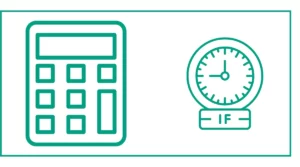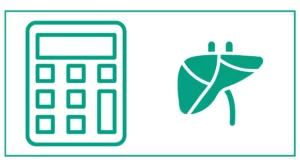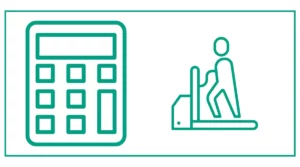6 Minute Walk Test Calculator
The 6 minute walk calculator helps you calculate the functional status or fitness of a person through the 6 minute walk test.
Select your gender, enter your age, height, and weight to calculate the estimated healthy 6MWD, minimum expected 6MWD, and your distance as % of the Expected. It also shows whether the values or normal or less than expected.
In 2002, the "American Thoracic Society" introduced a six-minute walk test with detailed guidelines known as the six-minute walk test.
This test measures aerobic fitness.
After this test, your doctor may propose more balanced heart-lung function tests.
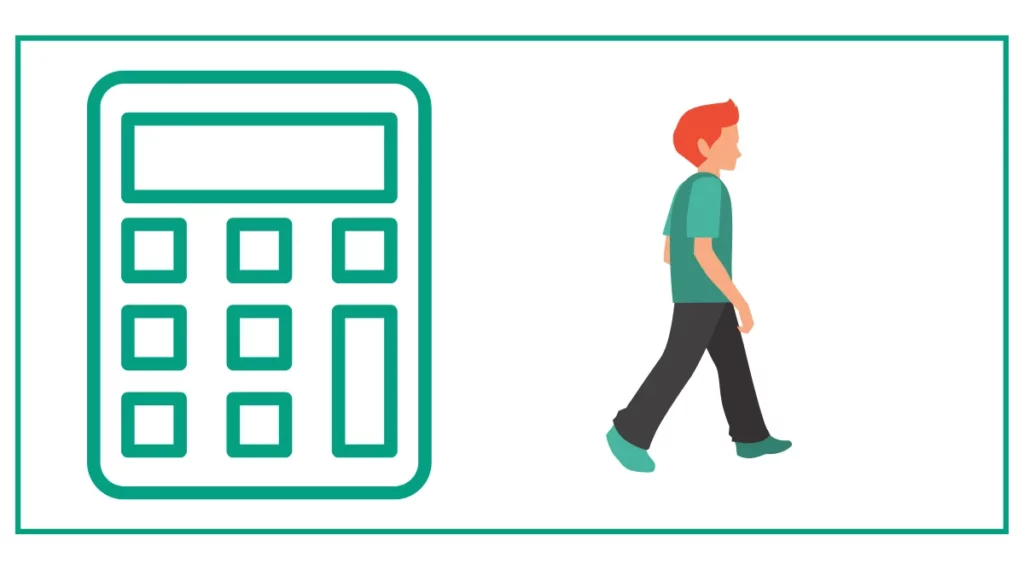
You might also want to determine the anaerobic threshold or walking calories.
What is the 6 Minute Walk Test?
The 6MWT is a standardized submaximal exercise test used to evaluate functional status and exercise capacity. During this test, individuals are asked to walk as far as possible for 6 minutes on a flat, hard surface. The primary outcome measure is the total distance walked in 6 minutes, known as the 6-minute walk distance (6MWD).
Purpose of the 6MWT
The main objectives of the 6MWT are:
- To assess functional exercise capacity
- To evaluate the effectiveness of interventions in patients with cardiopulmonary conditions
- To predict morbidity and mortality in various patient populations
- To measure changes in exercise capacity over time
How to Perform the 6 Minute Walk Test
The 6MWT is conducted according to standardized guidelines provided by the American Thoracic Society. Here's a step-by-step guide to performing the test:
- Preparation: Choose a flat, straight walking course at least 30 meters long. Mark the course with cones or tape at each end.
- Patient instructions: Explain the test to the patient. Instruct them to walk as far as possible for 6 minutes, but not to run or jog.
- Starting position: Have the patient stand at the starting line.
- Begin the test: Start the timer and instruct the patient to begin walking.
- During the test: Monitor the patient and provide standardized encouragement at specific intervals.
- End of test: When 6 minutes have elapsed, instruct the patient to stop walking.
- Measurement: Calculate the total distance walked to the nearest meter.
Interpreting 6MWT Results
The interpretation of 6MWT results involves comparing the distance walked by the patient to reference values for healthy adults of similar age, gender, height, and weight. Several predictive equations have been developed to estimate the expected 6MWD for individuals.
6 Minute Walk Test Calculator
To simplify the interpretation of 6MWT results, we've provided a calculator that estimates the expected 6MWD based on individual characteristics. This tool can help healthcare professionals and patients better understand their test results.
How to Use the Calculator
- Enter the patient's gender, age, height, and weight.
- Input the actual distance walked during the 6MWT.
- Click "Calculate" to see the results.
The calculator will provide:
- Estimated healthy 6MWD
- Minimum expected 6MWD
- Patient's distance as a percentage of the expected value
Interpreting Calculator Results
- If the patient's walked distance is above the minimum expected 6MWD, it generally indicates adequate functional capacity.
- If the distance is below the minimum expected 6MWD, it may suggest reduced functional capacity and warrant further investigation.
Factors Affecting 6MWT Performance
Several factors can influence a person's performance on the 6MWT:
- Age: 6MWD typically decreases with age.
- Gender: Men generally walk farther than women.
- Height: Taller individuals tend to have longer stride lengths and walk farther.
- Weight: Obesity can negatively impact walking distance.
- Motivation: Encouragement during the test can affect performance.
- Course layout: The length and shape of the walking course can influence results.
Clinical Applications of the 6MWT
The 6MWT is used in various clinical settings to:
- Assess functional status in patients with chronic obstructive pulmonary disease (COPD)
- Evaluate exercise capacity in heart failure patients
- Monitor disease progression in pulmonary arterial hypertension
- Predict outcomes in patients awaiting lung transplantation
- Measure the effectiveness of pulmonary rehabilitation programs
Advantages of the 6MWT
The 6MWT offers several benefits:
- Simplicity: The test is easy to administer and requires minimal equipment.
- Relevance: Walking is a daily activity, making the test relevant to patients' lives.
- Submaximal nature: The test is less stressful than maximal exercise tests.
- Standardization: Well-established guidelines ensure consistency in test administration.
Limitations of the 6MWT
Despite its utility, the 6MWT has some limitations:
- Variability: Results can be influenced by factors like motivation and course layout.
- Learning effect: Patients may improve performance with repeated tests.
- Ceiling effect: The test may not detect improvements in high-functioning individuals.
- Not suitable for all patients: Some individuals may be unable to complete the test due to severe impairments.
Safety Considerations
While the 6MWT is generally safe, certain precautions should be taken:
- Screen patients for contraindications (e.g., unstable angina, recent myocardial infarction).
- Monitor vital signs before, during, and after the test.
- Have emergency equipment and personnel readily available.
- Instruct patients to stop if they experience severe dyspnea, chest pain, or dizziness.
Comparing the 6MWT to Other Exercise Tests
The 6MWT is one of several tests used to assess functional capacity. Here's how it compares to other common tests:
- Cardiopulmonary Exercise Test (CPET): The CPET provides more detailed physiological data but requires specialized equipment and expertise.
- Shuttle Walk Test: This test is similar to the 6MWT but uses an incremental protocol. It may be more suitable for assessing higher-functioning individuals.
- Stair Climb Test: This test evaluates a different aspect of functional capacity and may be more relevant for certain patient populations.
- Treadmill Tests: These tests offer precise control over workload but may not reflect real-world functional capacity as accurately as the 6MWT.
Improving 6MWT Performance
For patients looking to improve their 6MWT performance, consider the following strategies:
- Regular aerobic exercise: Engage in activities like walking, cycling, or swimming to improve cardiovascular fitness.
- Strength training: Focus on lower body exercises to enhance muscular endurance.
- Breathing exercises: Practice techniques to improve respiratory efficiency.
- Pacing strategies: Learn to maintain a steady, sustainable pace throughout the test.
- Proper nutrition and hydration: Ensure adequate fueling before the test.
Future Directions in 6MWT Research
Ongoing research aims to refine the 6MWT and expand its applications:
- Developing population-specific reference equations
- Exploring the use of wearable technology to gather additional data during the test
- Investigating the 6MWT's role in predicting outcomes in new patient populations
- Standardizing methods for adjusting results based on course layout variations
Conclusion
The 6 Minute Walk Test is a valuable tool for assessing functional status and exercise capacity in patients with cardiopulmonary conditions. Its simplicity, relevance to daily activities, and established guidelines make it a popular choice in clinical practice. By understanding the test's procedure, interpretation, and limitations, healthcare professionals can effectively use the 6MWT to guide patient care and monitor treatment outcomes.
The provided calculator serves as a useful adjunct to the 6MWT, offering quick and easy interpretation of results based on individual characteristics. As research continues to refine our understanding of the 6MWT, its role in clinical practice is likely to evolve, potentially expanding to new patient populations and applications.
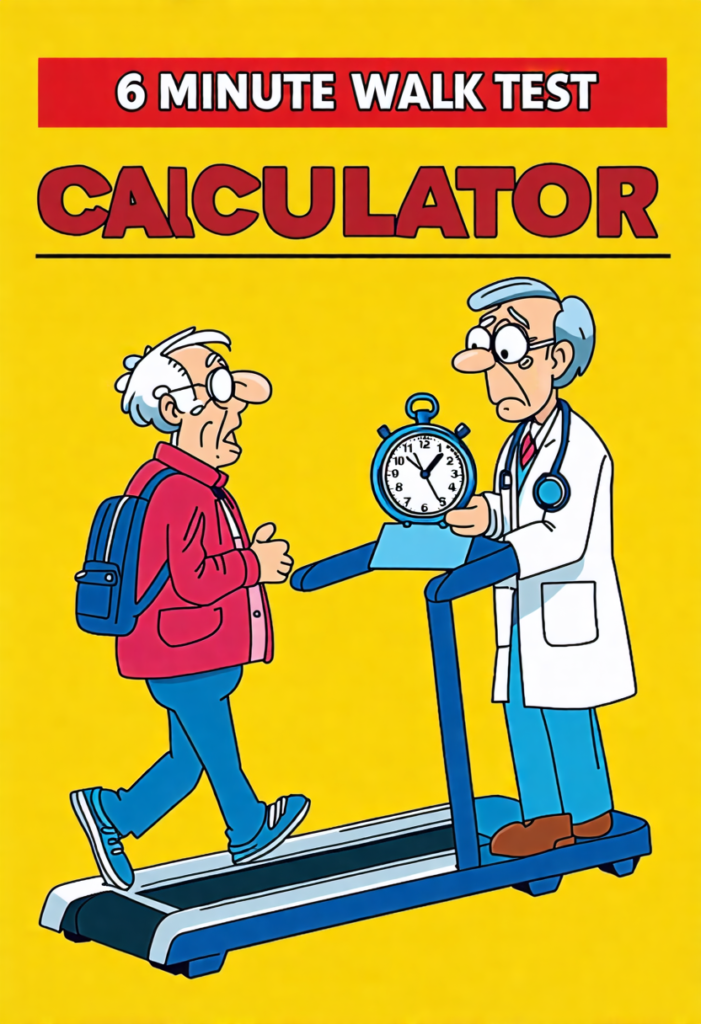
References
- ATS Statement. (2002, July 1). American Journal of Respiratory and Critical Care Medicine, 166(1), 111–117. doi.org/10.1164/ajrccm.166.1.at1102
- Matos Casano, H. A., & Anjum, F. (2023, April 27). Six-Minute Walk Test - StatPearls - NCBI Bookshelf. Six-Minute Walk Test - StatPearls - NCBI Bookshelf. ncbi.nlm.nih.gov/books/NBK576420/
- Fell, B., Hanekom, S., & Heine, M. (2022, March). A modified six-minute walk test (6MWT) for low-resource settings-a cross-sectional study. Heart & Lung, 52, 117–122. doi.org/10.1016/j.hrtlng.2021.12.008
